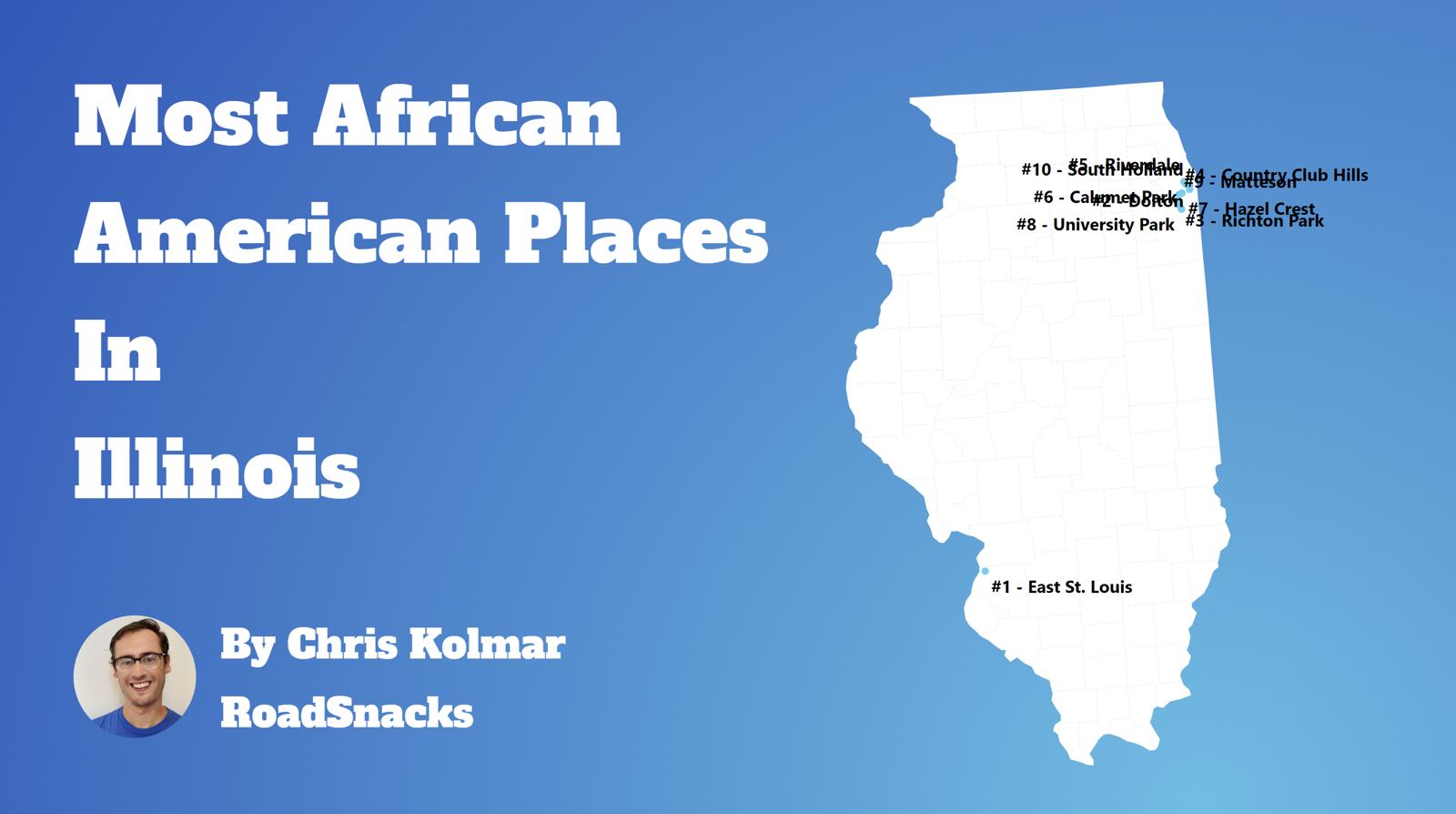Most African American cities in Illinois research summary. We used Saturday Night Science to analyze Illinois’s most recent Census data to determine the blackest cities in Illinois based on the percentage of Black residents. Here are the results of our analysis:
-
The city with the largest African American population in Illinois is East St. Louis based on the most recent Census data.
-
East St. Louis is 93.42% Black.
-
The least African American city in Illinois is Lake Bluff.
-
Lake Bluff is 0.0% Black.
-
Illinois is 13.7% Black.
-
Illinois is the 14th blackest state in the United States.
Table Of Contents: Top Ten | Methodology | Summary | Table
The Black community is one of the fastest-growing communities in America this decade.
Roughly 42 million people identifying as Black or African American live in the United States, making up 12% of the total population. According to the most recent American Community Survey, the Black population in Illinois is 1,744,151 – at 13.7% of the total population of Illinois.
The percentage growth of Blacks in America is the third largest percentage change for any race according to the Census’s race and ethnicity definition. Most scholars and historians agree that increasing diversity in America is a good thing.
We agree.
But how has the increase in the black population impacted Illinois? Which cities and towns in Illinois have seen the greatest increase in its Black population?
We broke down the most recent census data to determine the cities in Illinois with the largest African American population in 2024:
Most African American Places In Illinois
What’s the blackest city in Illinois? The city with the largest Black population in Illinois for 2024 is East St. Louis. See if East St. Louis ranked as one of the most african american places in America.
And if you already knew these places were Black, check out the best places to live in Illinois or the most diverse places in Illinois.
The 10 Blackest Cities In Illinois For 2024
1. East St. Louis
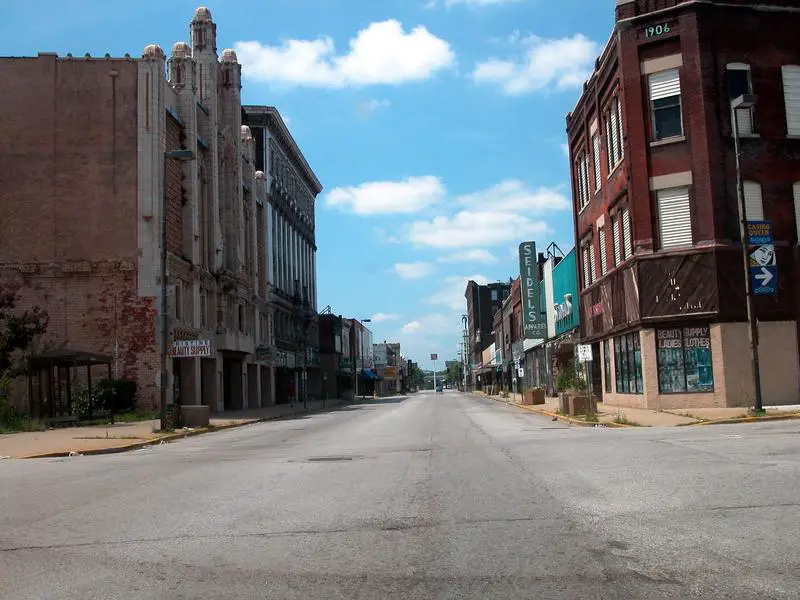
/10
Population: 18,796
% African American: 93.42%
# Of African American Residents: 17,559
Percent Change Since 2010: -35.13%
More on East St. Louis: Data | Cost Of Living
2. Dolton
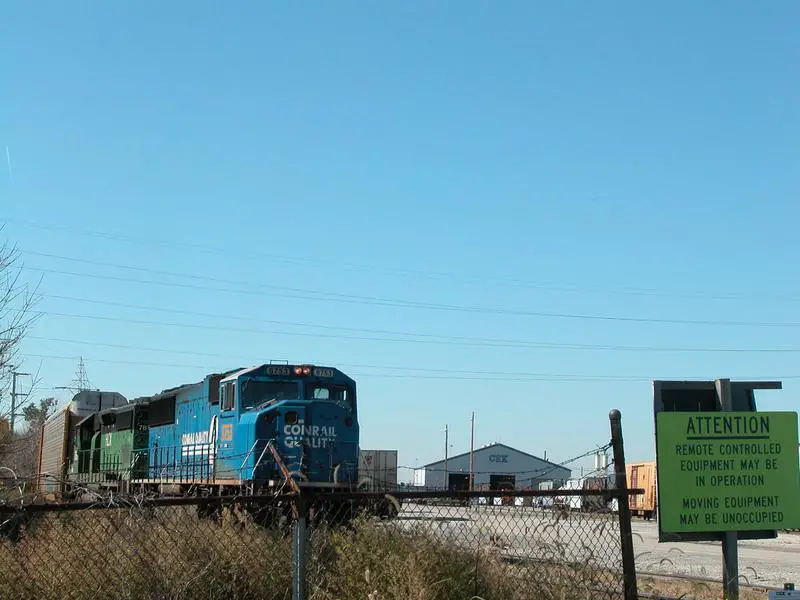
/10
Population: 21,283
% African American: 91.19%
# Of African American Residents: 19,409
Percent Change Since 2010: -7.83%
More on Dolton: Data | Cost Of Living
3. Richton Park
/10
Population: 12,721
% African American: 88.73%
# Of African American Residents: 11,287
Percent Change Since 2010: 9.5%
More on Richton Park: Data | Cost Of Living
4. Country Club Hills
/10
Population: 16,578
% African American: 88.52%
# Of African American Residents: 14,675
Percent Change Since 2010: 3.89%
More on Country Club Hills: Data | Cost Of Living
5. Riverdale
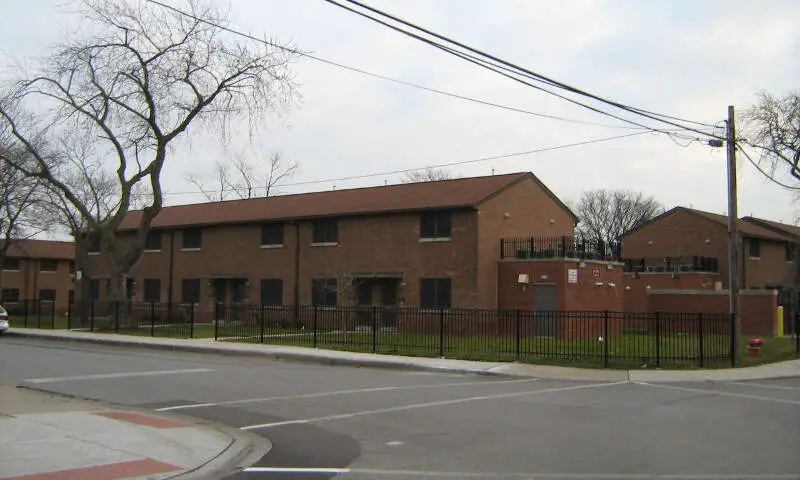
/10
Population: 10,528
% African American: 87.53%
# Of African American Residents: 9,215
Percent Change Since 2010: -28.03%
More on Riverdale: Data | Cost Of Living
6. Calumet Park
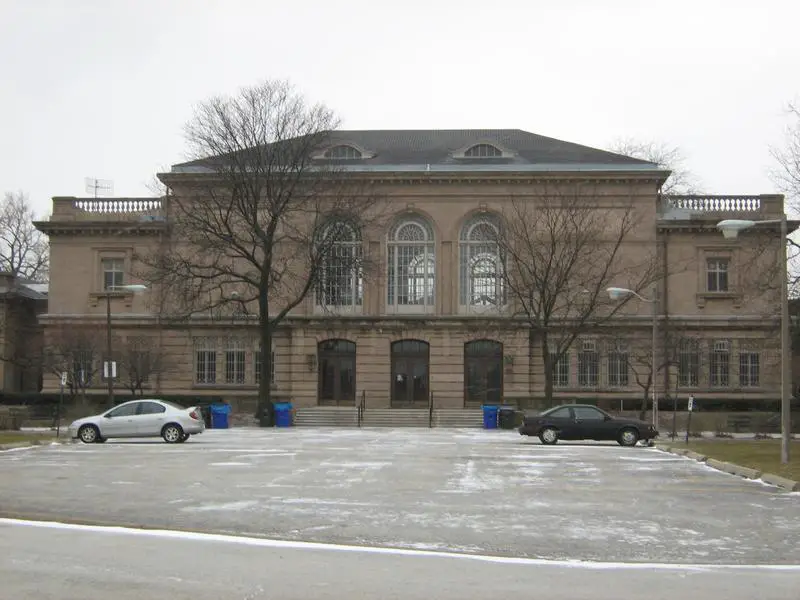
/10
Population: 7,193
% African American: 86.67%
# Of African American Residents: 6,234
Percent Change Since 2010: -3.93%
More on Calumet Park: Data | Cost Of Living
7. Hazel Crest
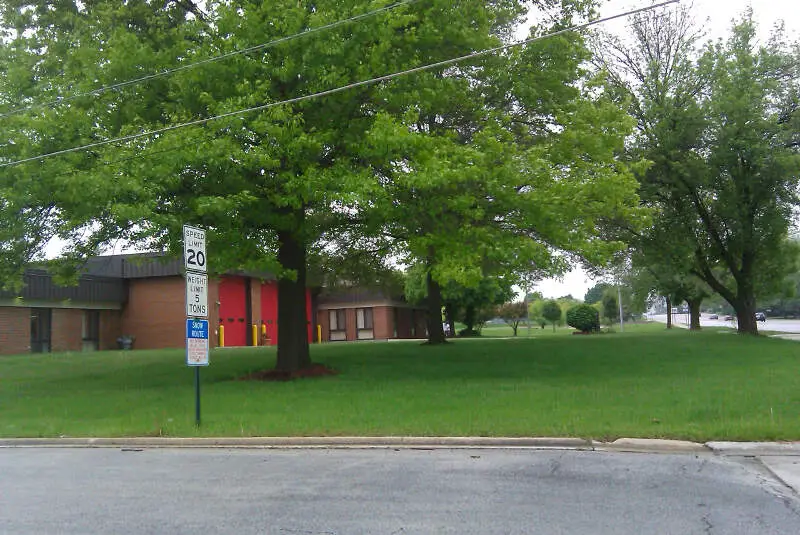
/10
Population: 13,737
% African American: 86.29%
# Of African American Residents: 11,853
Percent Change Since 2010: -0.94%
More on Hazel Crest: Data | Cost Of Living
8. University Park
/10
Population: 7,328
% African American: 83.39%
# Of African American Residents: 6,111
Percent Change Since 2010: -2.77%
More on University Park: Data | Cost Of Living
9. Matteson
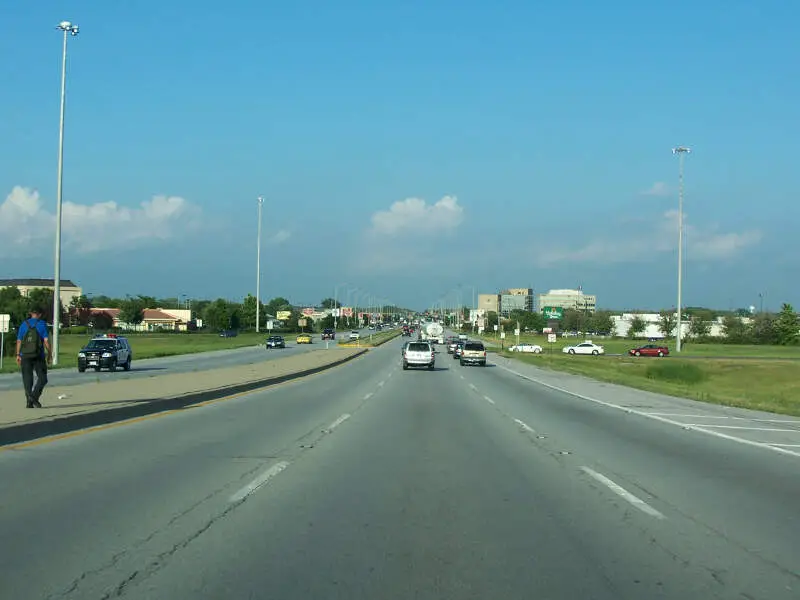
/10
Population: 18,898
% African American: 80.07%
# Of African American Residents: 15,132
Percent Change Since 2010: 9.92%
More on Matteson: Data | Cost Of Living
10. South Holland
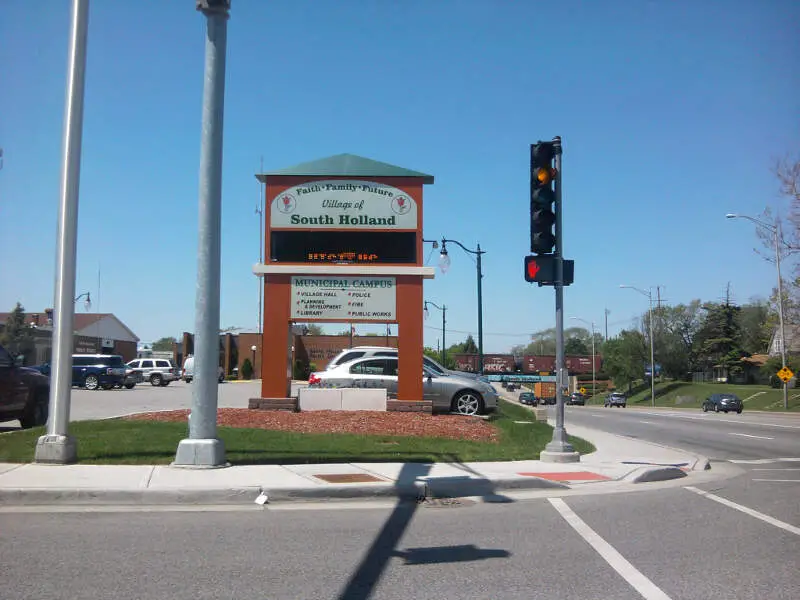
/10
Population: 21,287
% African American: 79.48%
# Of African American Residents: 16,918
Percent Change Since 2010: 1.93%
More on South Holland: Data | Cost Of Living
Methodology: How We Determined The Cities In Illinois With The Largest Black Population For 2024
We still believe in the accuracy of data — especially from the Census. So that’s where we went to get the race breakdown across Illinois.
That leads us to the Census’s most recently available data, the 2018-2022 American Community Survey data from the US Census.
Specifically, we looked at table B03002: Hispanic OR LATINO ORIGIN BY RACE. Here are the category names as defined by the Census:
- Hispanic or Latino
- White alone*
- Black or African American alone*
- American Indian and Alaska Native alone*
- Asian alone*
- Native Hawaiian and Other Pacific Islander alone*
- Some other race alone*
- Two or more races*
Our particular column of interest was the number of people who identified as Black or African American.
We limited our analysis to non-CDPs with a population greater than 5,000 people in Illinois. That left us with 324 cities.
We then calculated the percentage of residents that are Black or African American. The percentages ranked from 93.4% to 0.0%.
Finally, we ranked each city based on the percentage of the Black population, with a higher score being more Black than a lower score. East St. Louis took the distinction of being the most Black, while Lake Bluff was the least African American city.
We updated this article for 2024. This is our tenth time ranking the cities in Illinois with the largest African American population.
Read on for more information on how the cities in Illinois ranked by population of African American residents or, for a more general take on diversity in America, head over to our ranking of the most diverse cities in America.
Summary: Black Populations Across Illinois
If you’re looking for a breakdown of African American populations across Illinois according to the most recent data, this is an accurate list.
The blackest cities in Illinois are East St. Louis, Dolton, Richton Park, Country Club Hills, Riverdale, Calumet Park, Hazel Crest, University Park, Matteson, and South Holland.
If you’re curious enough, here are the least African American places in Illinois:
- Lake Bluff
- Pana
- Elburn
For more Illinois reading, check out:
- Most Dangerous Cities In Illinois
- Cheapest Places To Live In Illinois
- Best Places To Live In Illinois
African American Population By City In Illinois
| Rank | City | Population | African American Population | % African American |
|---|---|---|---|---|
| 1 | East St. Louis | 18,796 | 17,559 | 93.42% |
| 2 | Dolton | 21,283 | 19,409 | 91.19% |
| 3 | Richton Park | 12,721 | 11,287 | 88.73% |
| 4 | Country Club Hills | 16,578 | 14,675 | 88.52% |
| 5 | Riverdale | 10,528 | 9,215 | 87.53% |
| 6 | Calumet Park | 7,193 | 6,234 | 86.67% |
| 7 | Hazel Crest | 13,737 | 11,853 | 86.29% |
| 8 | University Park | 7,328 | 6,111 | 83.39% |
| 9 | Matteson | 18,898 | 15,132 | 80.07% |
| 10 | South Holland | 21,287 | 16,918 | 79.48% |
| 11 | Markham | 11,592 | 8,508 | 73.4% |
| 12 | Calumet City | 35,708 | 25,455 | 71.29% |
| 13 | Park Forest | 21,042 | 14,912 | 70.87% |
| 14 | Lynwood | 9,087 | 6,416 | 70.61% |
| 15 | Bellwood | 18,611 | 13,086 | 70.31% |
| 16 | Broadview | 7,957 | 5,448 | 68.47% |
| 17 | Glenwood | 8,542 | 5,451 | 63.81% |
| 18 | Flossmoor | 9,405 | 5,883 | 62.55% |
| 19 | Sauk Village | 9,862 | 6,124 | 62.1% |
| 20 | Maywood | 23,385 | 14,072 | 60.18% |
| 21 | Harvey | 20,035 | 11,785 | 58.82% |
| 22 | Homewood | 19,868 | 9,891 | 49.78% |
| 23 | Hillside | 8,213 | 3,999 | 48.69% |
| 24 | Lansing | 28,713 | 13,560 | 47.23% |
| 25 | Kankakee | 24,795 | 10,201 | 41.14% |
| 26 | Chicago Heights | 27,366 | 10,792 | 39.44% |
| 27 | Crete | 8,425 | 2,914 | 34.59% |
| 28 | Blue Island | 22,934 | 7,610 | 33.18% |
| 29 | Danville | 29,100 | 9,614 | 33.04% |
| 30 | Belleville | 42,155 | 12,884 | 30.56% |
| 31 | Fairview Heights | 16,360 | 4,951 | 30.26% |
| 32 | Chicago | 2,721,914 | 771,853 | 28.36% |
| 33 | Carbondale | 22,039 | 6,012 | 27.28% |
| 34 | Peoria | 113,054 | 29,831 | 26.39% |
| 35 | Chester | 6,941 | 1,790 | 25.79% |
| 36 | Forest Park | 14,165 | 3,578 | 25.26% |
| 37 | Berkeley | 5,283 | 1,322 | 25.02% |
| 38 | Alton | 25,642 | 6,313 | 24.62% |
| 39 | North Chicago | 30,890 | 7,526 | 24.36% |
| 40 | Decatur | 70,975 | 16,960 | 23.9% |
| 41 | Alsip | 18,866 | 4,348 | 23.05% |
| 42 | Evergreen Park | 19,730 | 4,468 | 22.65% |
| 43 | Rantoul | 12,544 | 2,821 | 22.49% |
| 44 | Pinckneyville | 5,104 | 1,142 | 22.37% |
| 45 | Shiloh | 13,892 | 2,997 | 21.57% |
| 46 | Zion | 24,570 | 5,297 | 21.56% |
| 47 | Rockford | 148,173 | 31,677 | 21.38% |
| 48 | Justice | 12,525 | 2,673 | 21.34% |
| 49 | Crest Hill | 19,886 | 4,181 | 21.02% |
| 50 | Swansea | 14,888 | 3,058 | 20.54% |
| 51 | Springfield | 114,214 | 22,961 | 20.1% |
| 52 | Westchester | 16,694 | 3,202 | 19.18% |
| 53 | Oak Park | 53,834 | 10,138 | 18.83% |
| 54 | Waukegan | 89,435 | 15,891 | 17.77% |
| 55 | Bolingbrook | 73,755 | 13,084 | 17.74% |
| 56 | Champaign | 88,628 | 15,084 | 17.02% |
| 57 | East Moline | 20,937 | 3,531 | 16.86% |
| 58 | Joliet | 150,221 | 25,331 | 16.86% |
| 59 | Urbana | 38,741 | 6,505 | 16.79% |
| 60 | Evanston | 77,181 | 12,415 | 16.09% |
| 61 | Rock Island | 37,264 | 5,964 | 16.0% |
| 62 | Greenville | 7,121 | 1,125 | 15.8% |
| 63 | Steger | 9,518 | 1,502 | 15.78% |
| 64 | Collinsville | 24,294 | 3,811 | 15.69% |
| 65 | Murphysboro | 7,101 | 1,059 | 14.91% |
| 66 | Dekalb | 40,697 | 5,913 | 14.53% |
| 67 | Freeport | 23,884 | 3,348 | 14.02% |
| 68 | Beach Park | 13,995 | 1,880 | 13.43% |
| 69 | Posen | 5,442 | 713 | 13.1% |
| 70 | O’fallon | 32,104 | 4,077 | 12.7% |
| 71 | Normal | 52,920 | 6,684 | 12.63% |
| 72 | Galesburg | 29,923 | 3,764 | 12.58% |
| 73 | Mount Vernon | 14,740 | 1,853 | 12.57% |
| 74 | Hillsboro | 5,673 | 664 | 11.7% |
| 75 | Robinson | 7,089 | 805 | 11.36% |
| 76 | Granite City | 27,026 | 3,006 | 11.12% |
| 77 | Romeoville | 40,132 | 4,434 | 11.05% |
| 78 | Crestwood | 10,737 | 1,163 | 10.83% |
| 79 | Woodridge | 34,027 | 3,671 | 10.79% |
| 80 | Glendale Heights | 33,088 | 3,418 | 10.33% |
| 81 | Aurora | 181,405 | 18,734 | 10.33% |
| 82 | Centralia | 12,096 | 1,237 | 10.23% |
| 83 | Dixon | 15,573 | 1,582 | 10.16% |
| 84 | Vandalia | 6,058 | 609 | 10.05% |
| 85 | Oswego | 34,810 | 3,458 | 9.93% |
| 86 | Bourbonnais | 18,125 | 1,783 | 9.84% |
| 87 | Frankfort | 20,260 | 1,946 | 9.61% |
| 88 | Midlothian | 14,200 | 1,357 | 9.56% |
| 89 | North Riverside | 7,245 | 691 | 9.54% |
| 90 | Bloomington | 78,788 | 7,390 | 9.38% |
| 91 | Moline | 42,452 | 3,959 | 9.33% |
| 92 | Summit | 11,036 | 1,021 | 9.25% |
| 93 | Pontiac | 11,451 | 1,054 | 9.2% |
| 94 | Grayslake | 20,801 | 1,881 | 9.04% |
| 95 | Skokie | 67,076 | 5,995 | 8.94% |
| 96 | Plainfield | 44,941 | 4,013 | 8.93% |
| 97 | Orland Hills | 6,842 | 609 | 8.9% |
| 98 | Macomb | 15,207 | 1,277 | 8.4% |
| 99 | North Aurora | 17,750 | 1,472 | 8.29% |
| 100 | Berwyn | 56,556 | 4,647 | 8.22% |

